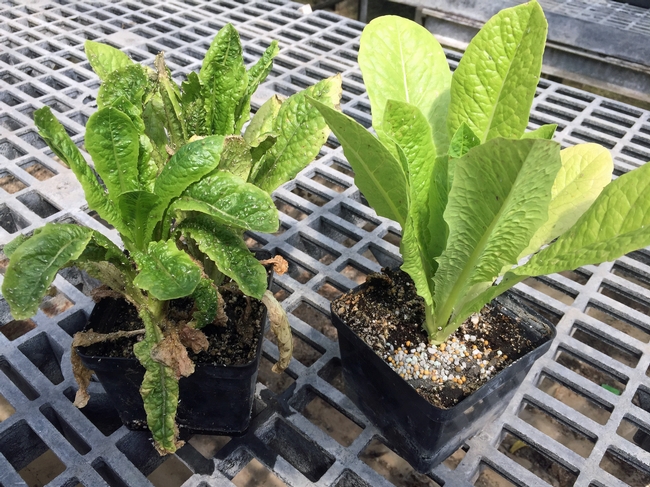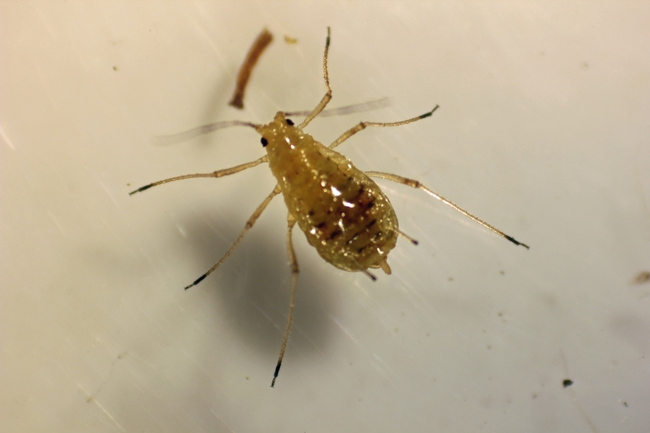Posts Tagged: aphid
It's Friday Fly Day!
It's Friday Fly Day--and time to post images of a syrphid fly. Syrphid flies, often mistaken for honey bees, are pollinators, too. Also known...
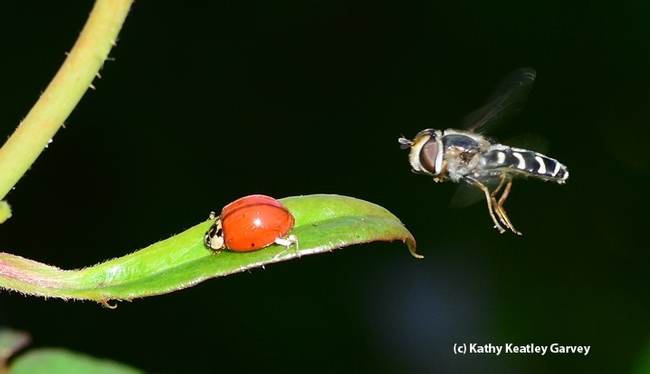
A syrphid fly, a female Scaeva pyrastri, hovers over an Asian lady beetle (Harmonia axyridis). (Photo by Kathy Keatley Garvey)
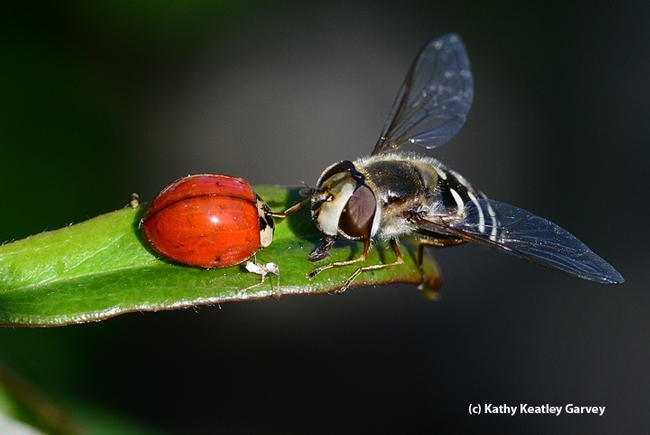
The syrphid fly licks honey dew from the head of the lady beetle, which had just feasted on the honeydew-producing aphids on a rose bush. (Photo by Kathy Keatley Garvey)
UCCE advisor is tracking down answers to a lettuce aphid mystery
When Alejandro Del Pozo-Valdivia started his new job as UC Cooperative Extension entomology advisor in the Salinas Valley last year, he immediately faced an urgent problem in organic lettuce production.
Pest control advisers were finding lettuce aphids in plants that were supposed to be resistant.
Because lettuce aphids crawl deep within the heart of the lettuce head, and because organic growers do not have many options for chemical pest control, the industry relies on patented lettuce varieties that have been conventionally bred to be unpalatable to the pest.
“With other types of aphids, they stay on the outer leaves. When you harvest and clean the head, you are taking the aphids out,” Del Pozo-Valdivia said. “But with the lettuce aphid, it's almost impossible to remove them. We don't want consumers to buy a lettuce with these tiny red insects inside.”
Organic producers pay a premium for resistant seeds to grow lettuce without the lettuce aphid and are mystified by the sudden appearance of the pest inside lettuce heads. Has the aphid developed the capability to feed on resistant varieties? Is there a different lettuce aphid biotype in the area? Since Del Pozo-Valdivia is an entomologist, he is focusing on the pest.
With funding from the California Leafy Green Research Board, Del Pozo-Valdivia and his co-principal investigator, USDA scientist Jim McCreight, have launched a research project to collect and identify the lettuce aphids that are feeding and reproducing in the resistant lettuce in the Salinas Valley.
“I'm asking growers and PCAs to contact me if they find any red aphids in resistant lettuce so we can confirm the type of aphid,” Del Pozo-Valdivia said. “
Seed companies that hold the patent on resistant lettuce also experienced broken resistance in Europe a few years ago, Del Pozo-Valdivia said. They found that the pest in Europe was a different biotype and are already working on identifying genes to maintain the lettuce aphid resistance.
“We haven't seen any scientific report for the U.S. That's why we decided to take the lead. To take the bull by the horns and identify the aphids here in the Salinas Valley,” Del Pozo-Valdivia said.
Sugarcane Aphid - an Unwelcome Visitor to California's Central Valley
Sorghum is grown in California as a high yielding, drought resistant, low input forage and grain crop. However, it's been bugged lately. Last...
The Incredible Aphid-Eating Machines
Just call them the "incredible aphid-eating machines." That would be the lady beetles, commonly known as ladybugs (although they are not bugs;...
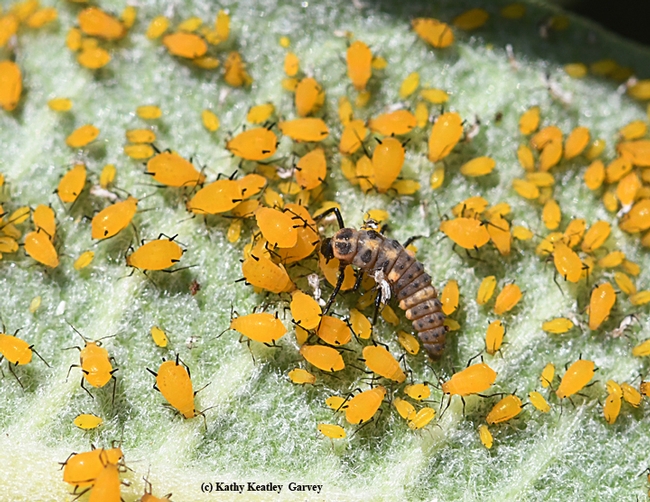
Lady beetle larva dining on aphids on milkweed, UC Davis campus. (Photo by Kathy Keatley Garvey)
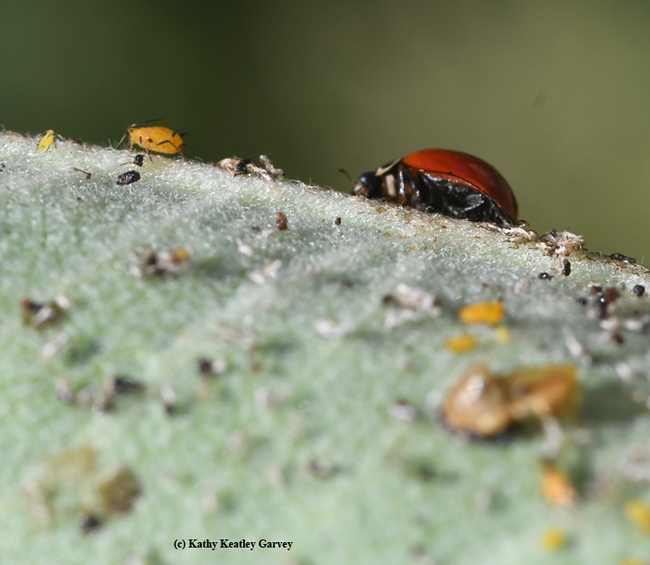
A lady beetle, aka ladybug, tracks down more prey. (Photo by Kathy Keatley Garvey)
Be on the lookout for sugarcane aphid this summer
Last year many forage sorghum fields were heavily infested and damaged by Sugarcane Aphid (SCA) (Figure 1) – Melanaphis sacchari –...



